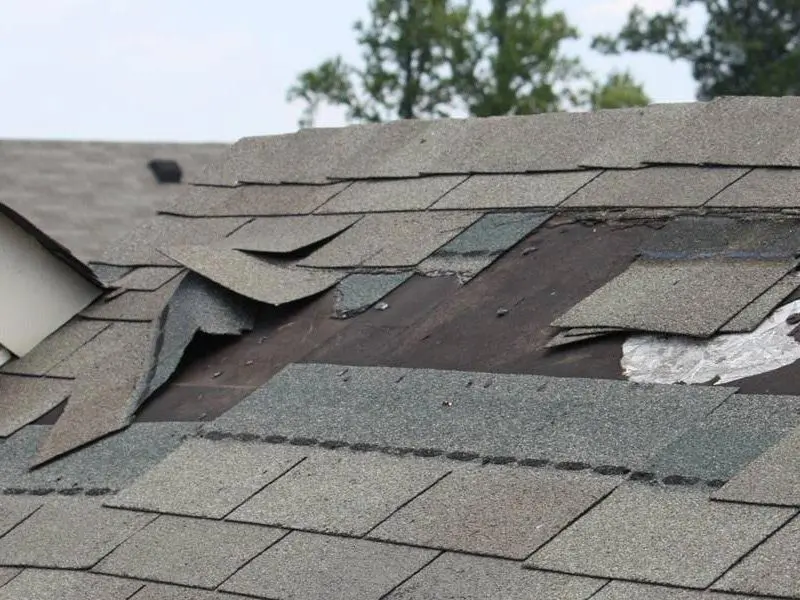
Roof Damage Uncovered: Inspection, Issues, and Solutions
If you live in Southern California, you are no stranger to the unique weather patterns and environmental conditions that can wreak havoc on your roof. Over time, these factors can cause roof damage that, if left unchecked, may lead to costly repairs or even a complete roof replacement. In this article, we will discuss how to inspect your own roof, common roof damages found in Southern California, and what these damages mean for your property.
Inspecting Your Own Roof
Before we delve into the common types of roof damage, let’s discuss how to properly inspect your roof to identify any issues.
Safety Measures
Safety should always come first when inspecting your roof. Follow these guidelines to ensure your safety:
- Choose a day with calm, dry weather.
- Wear appropriate footwear with good traction.
- Use a sturdy ladder and have someone hold it for you.
- Avoid walking on the roof if possible. Use binoculars to inspect from a distance if necessary.
Tools and Equipment
To conduct a thorough inspection, you’ll need the following tools and equipment:
- Binoculars
- Ladder
- Flashlight
- Gloves
- Camera or smartphone for documentation
Common Roof Damages
Now that you’re prepared to inspect your roof, let’s discuss some common types of roof damage you may encounter.
Broken or Missing Shingles
High winds, storms, and general wear and tear can cause shingles to break or go missing. This exposes the underlying roof structure to water and debris, leading to further damage.
Cracked or Worn Flashing
Flashing is the metal material installed around roof penetrations, such as vents and chimneys, to prevent water intrusion. Over time, the flashing can become cracked or worn, allowing water to seep into your home.
Damaged Vent Boots
Vent boots are the rubber or metal covers that seal the area around roof vents. If they become damaged, cracked, or loose, water can enter your home.
Sagging Roof
A sagging roof is often a sign of a more significant structural issue, such as weakened or damaged rafters or water damage to the roof sheathing.
Roof Leaks
Roof leaks are one of the most common types of roof damage and can result from various issues, including missing shingles, damaged flashing, and worn vent boots.
What Do Roof Damages Mean
Roof damages can lead to a host of problems for homeowners. If left unaddressed, these issues can result in:
- Interior water damage
- Mold and mildew growth
- Structural damage
- Decreased energy efficiency
- Reduced lifespan of the roof
It’s essential to address roof damages as soon as they’re identified to prevent further deterioration and costly repairs.
Dealing with Roof Damages
There are various ways to address roof damage, depending on the severity and type of damage. Here are some steps you can take:
DIY Repairs
Minor repairs, such as replacing a few missing shingles or resealing vent boots, can be done by homeowners with the right tools and knowledge. However, it’s crucial to ensure you’re comfortable and confident in your abilities before attempting any DIY repairs.
Hiring a Professional
For more complex or extensive damage, it’s best to hire a professional roofing contractor. They have the expertise and equipment necessary to properly assess and repair the damage.
Regular Maintenance
Conducting regular roof maintenance can help prevent many common roof damages. This includes cleaning gutters, trimming overhanging branches, and inspecting your roof for signs of wear or damage.
When to Replace the Roof
In some cases, the damage may be too extensive, or the roof may have reached the end of its lifespan. In these situations, a full roof replacement may be necessary. Consult with a professional roofing contractor to determine the best course of action for your specific situation.
Conclusion
Roof damages are common in Southern California due to the region’s unique environmental conditions. By inspecting your roof regularly, identifying common damages, and understanding their implications, you can make informed decisions about how to address these issues. Whether you’re tackling minor repairs yourself or hiring a professional, addressing roof damages promptly will help protect your home and prevent more significant problems down the line.
FAQs
1. How often should I inspect my roof?
It’s recommended to inspect your roof at least twice a year, preferably in the spring and fall. Additionally, it’s a good idea to check your roof after significant storms or high-wind events.
2. Can I perform a roof inspection myself, or should I hire a professional?
While homeowners can perform basic roof inspections, it’s always a good idea to consult a professional roofing contractor for a more thorough assessment, especially if you suspect damage or have limited roofing knowledge.
3. How can I tell if my roof needs to be replaced?
Some signs that your roof may need replacement include numerous missing or damaged shingles, extensive granule loss, persistent leaks, and a roof that is past its expected lifespan.
4. How long does a typical roof last?
The lifespan of a roof depends on the materials used and the quality of installation. Asphalt shingles typically last 20-30 years, while metal and tile roofs can last 40-70 years or more.
5. How much does it cost to replace a roof?
The cost of a roof replacement varies depending on factors such as the size of your roof, the materials used, and labor costs in your area.
Schedule a Consultation with Tidal Remodeling
If you’re concerned about the condition of your roof or need help with repairs or replacement, don’t hesitate to schedule a consultation with Tidal Remodeling. Our experienced team will provide a free, zero-obligation inspection to assess your roof and recommend the best course of action. Protect your home and investment by contacting us today.



